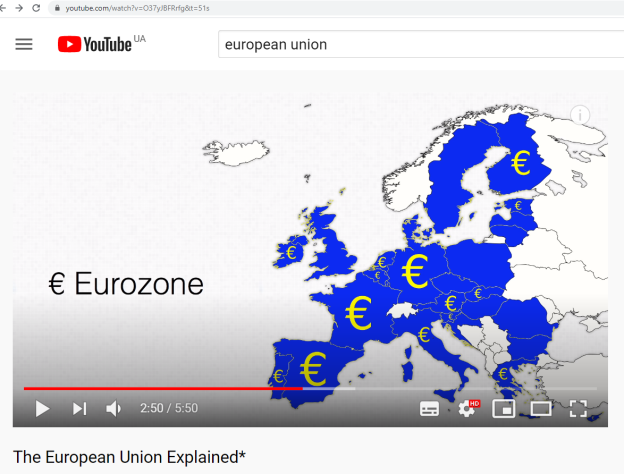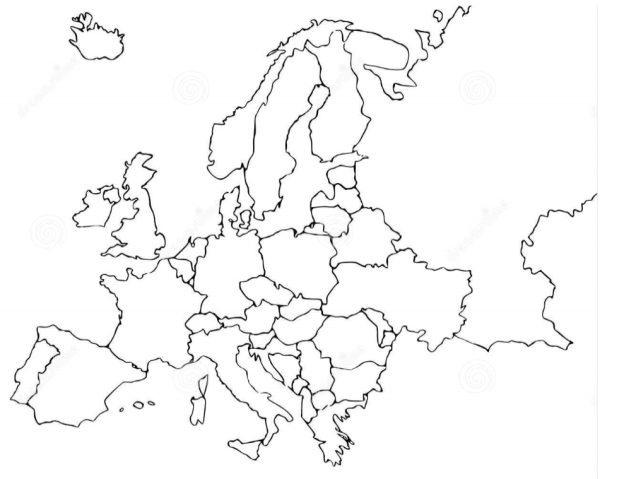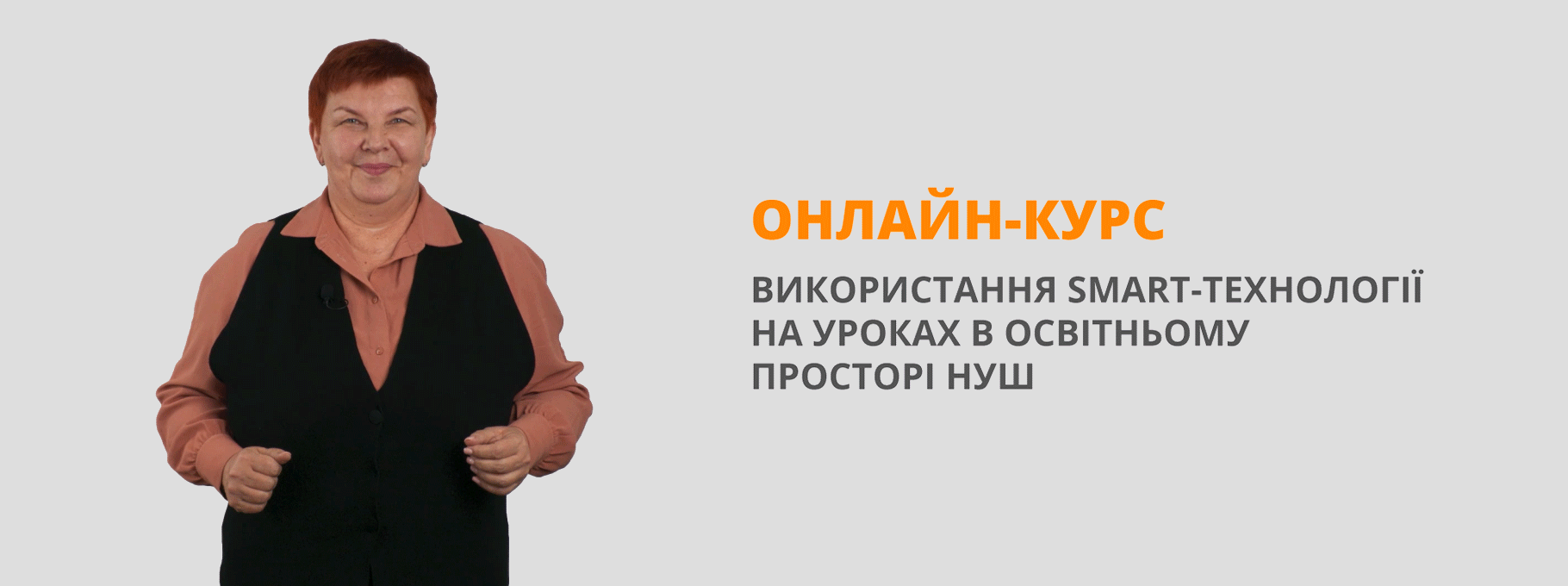Розробка уроку з англійської мови "Сторінками Європейського Союзу"
Навчально-методична карта заняття
Тема: «Сторінками Європейського Союзу»
Цілі уроку:
Практичні:
- формувати уміння використовувати новий лексичний матеріал у говорінні, письмі;
- використовувати здобуті знання та інформацію при вивченні інших предметів;
- формувати та удосконалювати навички аудіювання, говоріння;
- зацікавити здобувати знання та інформацію шляхом змагання та командної роботи.
Розвиваючі:
- розвивати вміння обмінюватись думками, висловлювати власну думку;
- розвивати впевненість у своїх знаннях;
- розвивати навички мовлення у всіх чотирьох видах мовленнєвої діяльності: аудіювання, читання, говоріння та письма.
Виховні:
- привернути увагу до історичних фактів власної країни та країн Європейського Союзу;
- виховувати патріотизм на громадянську позицію;
- розуміти важливість вивчення іноземної мови як міжнародного засобу спілкування.
Вид заняття: практичне.
Методи заняття: демонстрація відеоматеріалу про Європейський Союз, повідомлення, бесіда, пояснення, вікторина.
Література:
веб-сайти:
https://europa.eu/european-union/about-eu/countries_en
http://news.bbc.co.uk/2/hi/country_profiles/default.stm
https://europa.eu/learning-corner/quiz/what_en
двомовні словники: Малишев В.Ф. “новий англо-український словник” Харків 2012
роздатковий матеріал: вправи для виконання та обговорення.
Матеріально-технічне забезпечення, дидактичні засоби: двомовні словники, роздатковий матеріал, ноутбук, мультимедійний проектор, презентації Power Point, картки із завданнями, відеоматеріали.
Структурний план заняття:
І. Підготовка до заняття:
- Організаційна частина заняття.
- Перевірка самостійної роботи (домашнє завдання).
ІІ. Основна частина заняття:
- Актуалізація опорних знань( перегляд відео про Європейський Союз).
- Доведення теми заняття.
- Мотивація навчальної діяльності.
- Введення нових лексичних одиниць.
- Закріплення нових лексичних одиниць на практиці.
- Проходження вікторини у вигляді змагання.
ІІІ. Підведення підсумків:
9. Узагальнення матеріалу
10. Оцінювання студентів
11. Повідомлення домашнього завдання
«Сторінками Європейського Союзу»
Хід уроку
І. Початок уроку :
1.Організаційна частина заняття:
- Good afternoon students! Nice to see you again. I check your presence. Who is absent today?
- Перевірка домашнього завдання.
- Let’s check your homework.
ІІ. Основна частина уроку:
- Актуалізація опорних знань:
Ex. 1. Перегляньте, будь-ласка, коротеньке відео про Європейський Союз та обговорімо наступні питання Let’s watch short video about European union and discuss following questions:
(https://www.youtube.com/watch?v=O37yJBFRrfg&t=114s)

Questions:
- What is the European Union?
- Why was the European Union created?
- What is the purpose of the European Union?
- What institutions make up the European Union?
- What countries make up the European Union?
- What does the EU flag look like and what does it symbolize?
- What is the EU motto and what does it mean?
4. Доведення теми заняття: «Сторінками Європейського Союзу»
5. Мотивація навчальної діяльності.
- Введення нових лексичних одиниць.
Vocabulary:
intergovernmental — міждержавний
to establish — встановити, з'ясувати, ідентифікувати
treaty — договір, угода
aspect — аспект, підхід, сторона
to exist — існувати
relationship — відносини
to date back — датуватися
to cover —закрити, покрити
public policy — державна політика
foreign affairs — міжнародні відносини
defence — захист
to depend — залежати
to resemble — на кшталт, мати схожість
confederation — конфедерація, федерація, союз, об'єднання держав
consumer — споживач
home affairs — внутрішня політика
establishment —заклад; установа, організація
common single market — спільний ринок, єдиний ринок
to consist — складатися
customs union — митний союз
single currency — єдина валюта
to adopt — прийняти (що офіційно є законом, розпорядженням тощо)
trade policy — торгівельна політика
the Council of the European Union — Рада Європейського Союзу
the European Commission — Європейська Комісія
the European Parliament — Європейський Парламент
the European Court of Justice — Європейський суд
enlargement — розширення
to occur — траплятися
notwithstanding — незважаючи на
to grant — дарувати, забезпечити матеріальну підтримку
home rule — самоуправління
to grow - рости
to refer — посилатися
in order to — для того, щоб
to fulfill —виконувати, здійснювати
summit —зустріч глав урядів
current — поточні, сучасні
to agree — погоджуватися
area — площа, ділянка, простір, зона
approximately —приблизно
citizen — громадянин
land borders — сухопутні кордони
Ex.2 Прочитайте текст та дайте відповіді на питання. Read the text and answer the questions under the text:
European Union
The European Union or the EU is an intergovernmental and supranational union of 27 European countries, known as member states. The European Union was established under that name in 1992 by the Treaty on European Union, the Maastricht Treaty. However, many aspects of the Union existed before that date through a series of predecessor relationships, dating back to 1951.
The European Union's activities cover all areas of public policy, from health and economic policy to foreign affairs and defence. However, the extent of its powers differs greatly between areas. Depending on the area, the EU may therefore resemble a federation, for example, on monetary affairs, agricultural, trade and environmental policy or a confederation, for example, on social and economic policy, consumer protection, home affairs, or even an international organization, for example, in foreign affairs.
A key activity of the EU is the establishment and administration of a common single market, consisting of a customs union, a single currency adopted by 12 of the 27 member states, a Common Agricultural Policy, a common trade policy, and a Common Fisheries Policy.
The most important EU institutions are the Council of the European Union, the European Commission, the European Parliament and the European Court of Justice.
As to the enlargement of the EU there were five successive enlargements, with the largest occurring on May 1,2004, when 10 new member states joined.
Notwithstanding Greenland doesn't enter the EU because it was granted home rule by Denmark in 1979 and left the European Community in 1985, following a referendum.
Romania and Bulgaria will join the EU on 1 January 2007. In time the European Union may grow to 30 member states. The process of enlargement is sometimes referred to as European integration.
In order to join the European Union, a state needs to fulfill the economic and political conditions generally known as the Copenhagen criteria, after the Copenhagen summit in June 1993. Also, according to the EU Treaty, each current member state and the European Parliament have to agree.
The European Union has 27 member states, an area of 3,892,685 km2 and approximately 460 million EU citizens as of December 2004. If it were a country, it would be the seventh largest in the world by area and the third largest by population after China and India.
The European Union has land borders with 20 nations and sea borders with 31.
Questions:
1. What is the European Union?
2. When was the European Union established?
3. What were the purposes of the European Union creation?
4. What countries joined the European Union in 2004?
5. Do you want Ukraine to join the European Union?
6. What was the largest enlargement of the EU?
7. How many enlargements were there?
8. When does Romania and Bulgaria join the EU?
9. How many member states were in the European Union in the very beginning?
10. How many member states are there in the European Union nowadays?
11. How many member states will be in the European Union in 2007?
12. Will Ukraine join the EU in 2007?
13. Is the EU a federation or confederation?
14. What should a state do in order to join the EU?
15. Does Greenland enter the EU?
16. What is the area of the European Union?
17. What is the population of the EU?
- Закріплення нових лексичних одиниць на практиці.
Ex. 3 Запишіть 27 членів-країн Євросоюзу та 6 країн-кадидатів до вступу у Євросоюз. На карті розфарбуйте країн учасників одним кольом, а кандидатів іншим. List the 27 EU member countries and 6 EU candidate countries below. On the map, color the current EU member countries using one color and color the EU candidate countries using another color. Ignore the non-EU related nations.
Member Countries
1. _____________________
2. _____________________
3. _____________________
4. _____________________
5. _____________________
6. _____________________
7. _____________________
8. _____________________
9. _____________________
10. _____________________
11. _____________________
12. _____________________
13. _____________________
14. _____________________
15. _____________________
16. _____________________
17. _____________________
18. _____________________
19. _____________________
20. _____________________
21. _____________________
22. _____________________
23. _____________________
24. _____________________
25. _____________________
26. _____________________
27. _____________________
Candidate Countries
1. _____________________
2. _____________________
3. _____________________
4. _____________________
5. _____________________
6._____________________

Ex. 4 Співставте країну з її столицею. Match the country with capital city:
1. Germany a. Budapest
2. France b. Berlin
3. Hungary c. Paris
4. Spain d. Stockholm
5.Portugal e. Rome
6. Italy f. Lisbon
7. Belgium g. Copenhagen
8.Finland h. Madrid
9.Denmark i. Helsinki
10. Sweden j. Brussel
- Проходження вікторини у вигляді змагання.
Ex.5 Візьміть участь у вікторині та дайте якомога більше вірних відповідей
Quiz «What is European Union?»

1.Following the two devastating world wars in the 20th century that killed millions of people, several European countries decided to work together to ensure that there would be no more bloodshed.
Who were these founding members of the EU?
- Belgium, France, Germany, Italy, Luxembourg, the Netherlands and Spain
- Belgium, France, Germany, Italy, Luxembourg and the Netherlands.
- Belgium, France, Germany, Luxembourg, the Netherlands and Denmark.
2.The founding countries decided to share control of their coal and steel industries so that they could not secretly arm themselves against each other. After this, they set about expanding cooperation to other economic sectors.
What was the organisation they created in 1957 called?
- The European Economic Community.
- The European Coal and Steel Community.
-
The European Economic and Social Committee.
3. Soon after the Second World War, Europe was split into east and west. The Berlin Wall, which separated East and West Berlin for almost three decades, was a symbol of this division until its fall in 1989.
Which of these statements is true?
- Resistance against communist rule in central and eastern Europe led to the fall of the Berlin Wall.
- The reunification of Germany in 1990 brought West Germany into the European Union.
- Germany beat Argentina 1-0 in the 1990 football World Cup.
4.The first enlargement of the EU in 1973 brought its membership to nine.
Which were these three new countries?
- Denmark, Ireland and the United Kingdom.
- Norway, Demark and Ireland.
- The United Kingdom, Greenland and Denmark.
5. In the 1970s, three European countries, previously ruled by dictatorships, became democracies and became eligible to apply for EU membership.
Which of these statements is true?
- Greece, Spain and Portugal all became members in 1986.
- Greece became a member in 1981. Spain and Portugal followed in 1986.
- Greece and Spain joined in 1981 and Portugal followed in 1986.
6. The fall of the Berlin Wall cleared the way for central and eastern European countries that were previously controlled by the former Soviet Union to reform their systems and join the EU.
Which of these statements is true?
- Ten central and eastern European countries joined the EU on 1 May 2004, bringing EU membership to 25.
- Eight countries from central and eastern Europe and two Mediterranean islands joined the EU in May 2004.
- Ten countries including Bulgaria, Hungary, Poland and Romania joined the EU on 1 May 2004.
7. The European flag flies above parliaments, buildings, parks and monuments all over Europe.
What do the 12 golden stars on a blue background represent?
- The number of countries that were part of the EU when the flag was designed.
- Unity, solidarity and harmony among the people of Europe.
- The circle of knowledge and truth.
8. Which Member State…
…is one of six monarchies in the European Union;
…is known for its Midsummer celebrations; and
…joined the European Union in 1995, together with two other countries?
- Sweden.
- Finland.
- Estonia.
9.Which Member State…
…fought a war of independence between 1991 and 1995;
…has a coat of arms featuring a red and white checkerboard pattern;
…is the latest country to join the European Union?
- Bulgaria.
- Croatia.
- Slovenia.
10.How many official languages does the EU have?
- 24
- 23
- 19
11.Although there may sometimes be disagreements between EU countries, the basic principles behind the EU have remained unchanged for more than six decades. In 2012, the European Union was recognised for its work in uniting the continent.
Which award did it receive?
- The Charlemagne Prize.
- The Sakharov Prize.
- The Nobel Peace Prize.
12.Every year the EU celebrates its birthday on 9 May.
What is the name of the man who, on 9 May 1950, put forward the plan considered to be the beginning of what is now the European Union?
- Alcide De Gasperi.
- Robert Schuman.
- Konrad Adenauer.
13.The EU treaties govern how decisions are made and in which areas the EU acts jointly.
In which European city was the latest treaty signed?
- Rome.
- Amsterdam.
- Lisbon.
ІІІ. Підведення підсумків:
9. Узагальнення матеріалу.
- What is the European Union?
- Why was the European Union created?
- What is the purpose of the European Union?
- What countries make up the European Union?
10. Оцінювання студентів.
11. Повідомлення домашнього завдання:
Домашнє завдання:
Обрати будь-які 4 країни Євросоюзу та заповнити табличку цікавими фактами про ці країни.
|
Country |
Three Interesting Facts
|
|
1. |
|
|
2. |
|
|
3. |
|
|
4. |
|
Основна та додаткова література:
- Вишневський О. І. Діяльність учня на уроці іноземної мови / О. І. Вишневський. – К.: Рад. школа, 2008. – 224 c.
- Галіцинський Ю. “Англійська мова для школярів” К.:А.С.К., 2005
- Поспєлкіна І. Інтерактивні технології навчання / І. Поспєлкіна // Початкова освіта. – 2006. – № 44. – С. 3.
- https://europa.eu/european-union/about-eu/countries_en
- http://news.bbc.co.uk/2/hi/country_profiles/default.stm
- https://europa.eu/learning-corner/quiz/what_en
- https://www.youtube.com/watch?v=O37yJBFRrfg&t=114s


про публікацію авторської розробки
Додати розробку
